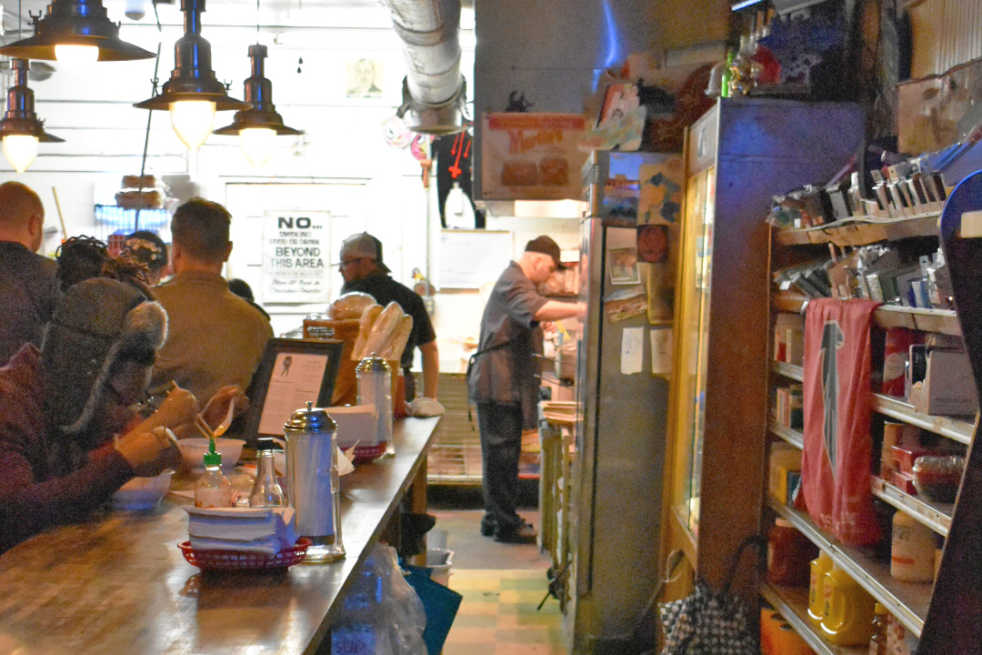In the quirky neighborhood of Reynoldstown, hundreds of people waited in the rain, their stomachs rumbling. They were promised a timeless dish; one that is so deeply rooted in ancient and modern Japanese culture: ramen.
As part of a promotional event, Illegal Food, a modern American restaurant, held a pop-up ramen night in a dainty little food store, appropriately named Little’s Food Store. One might question what a barbecue and burger place was doing with ramen, but this very curiosity might explain the only reason why an immense amount of people waited for hours in the rain for a bowl of noodles that unfortunately ended up being bleaker than any college student’s gourmet Top Ramen.
Japanese ramen has a rich history, yet at the same time is a relatively modest dish. It spent its early years as peasant food, looked down upon in medieval Japan.
Simply put, ramen is a bowl of rice or wheat noodles suspended in a broth with elements of fish, soy or pork bones. The meat in a bowl of ramen varies from chicken to seafood to the most famous, “chashu,” thinly cut slices of braised pork. Accessories such as “nori” (seaweed), “shoyu tamago” (egg soaked in soy sauce), bamboo shoots, corn and fish cakes, often called “naruto,” elevate the base bowl of ramen.
Illegal Food offered three types of ramen — tonkotsu, spicy shrimp and tofu for the vegans, but only the classic tonkotsu was sampled for this review. All the food came from a kitchen that somehow managed to fit four people bustling to steam noodles, pour broth and assemble meat and veggies into plastic to-go bowls, a clear red flag. The tonkotsu ramen, noodles in creamy pork broth with soft pork slices, initially looked underwhelming. The noodles were clumped together, the broth was more of a spicy water than a creamy liquid and all the meat and other ingredients had sunk to the bottom.
The first bite, taken with hopes of taste surpassing looks, brought forth a sinking feeling as it only bolstered initial judgements.
The tonkotsu broth, which is supposed to be somewhat dense, felt like powdered spices in warm water. The runny both lacked any sign of oil, creamy texture or pork flavor.
The noodles, chewier than the conventional standards, failed to soak up any of the little flavor the broth possessed and were only saved by the fact that it was hot, which complemented the drizzling cold outside.
On the contrary, the chashu was surprisingly delicate and pleasant, with a very familiar melt-in-your-mouth feel that most pork slices have. The corn, bamboo, fish cake and seaweed emerged only after trudging through three fourths of the bowl and admittedly they did make the experience more bearable.
Nevertheless, these ingredients should never be the highlight of a bowl of ramen, but sadly these side pieces, meant to simply accent the taste of the broth, were the only dynamic flavors in an otherwise tedious and dull bowl of slightly undercooked noodles and water with spices dashed into it.
This ramen pop-up night was a disappointment, but hopefully the proprietors of Illegal Food will learn from their mistakes. Their attempt to experiment with other types of cuisine is respectable, but they utterly failed to capture the true essence of the compelling taste of ramen.
